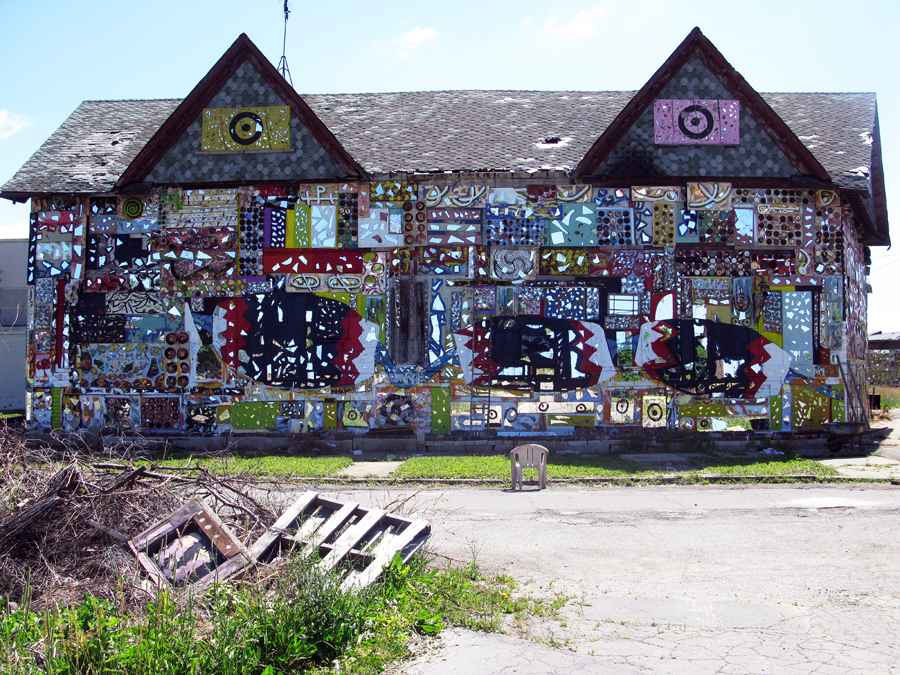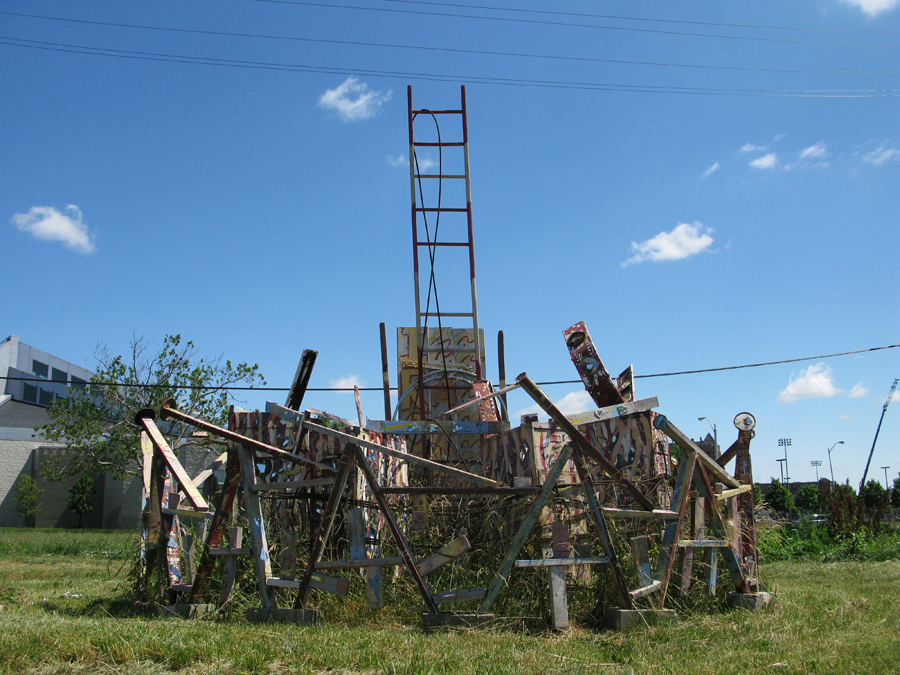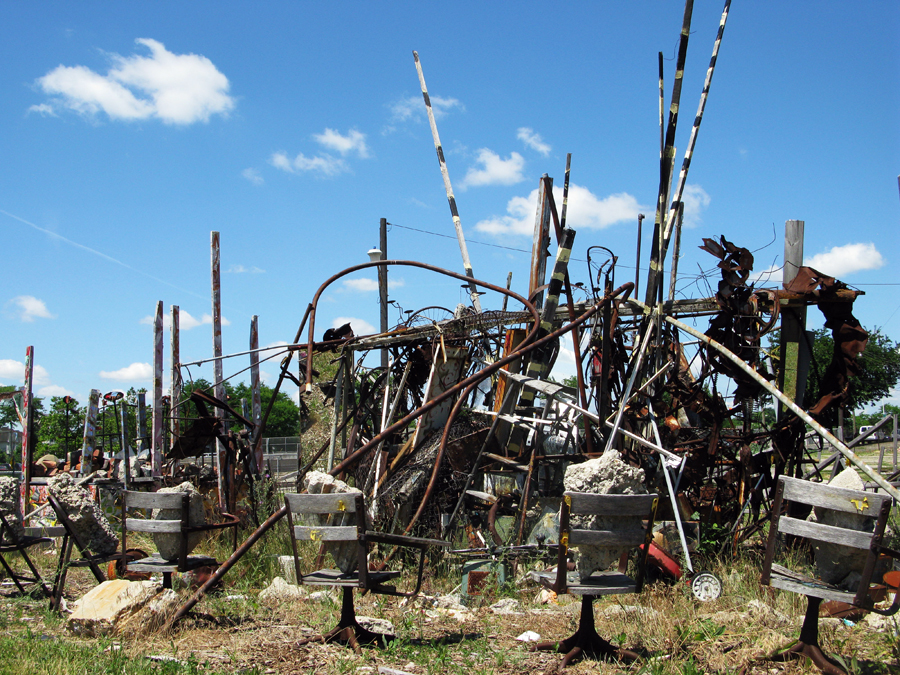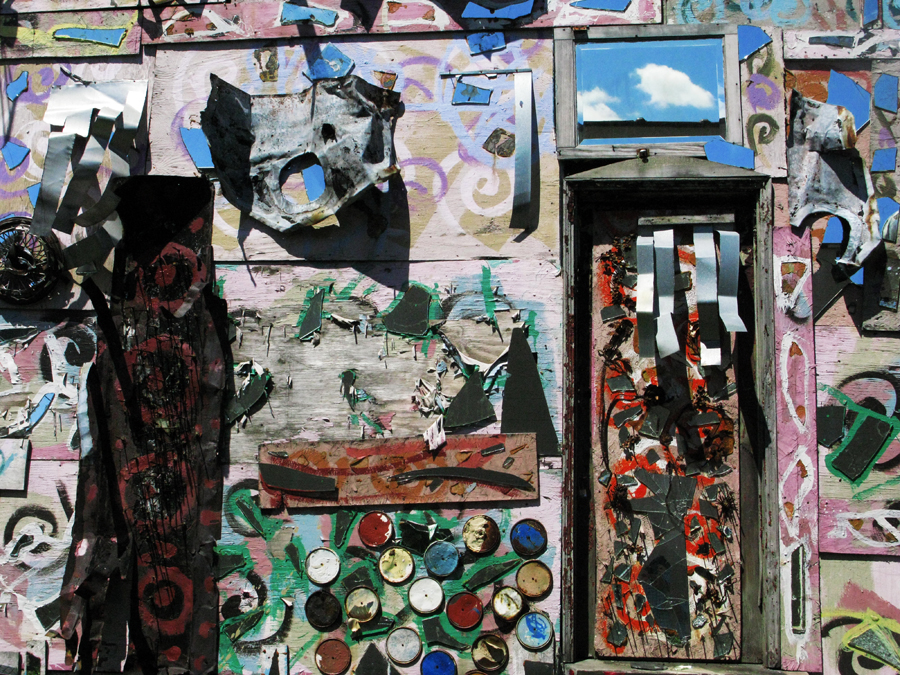
Soul of a city
Spending time with Olayame Dabls’ public art is in some ways essential to understanding Detroit’s recent history. In his hands, the rusted, discarded and broken bones of industry cohere into beautiful, monumental forms that address the racism, deindustrialization and abandonment that have wreaked such havoc on the city and its residents. Colored (and somehow safeguarded) by vibrant visions from Africa, the work, which can be found on adjacent plots of land overlooking Interstate 96 on the city’s near west side, expresses difficult truths, but is also a wonder and joy to behold.
Dabls just won a 2011 Kresge Artist Fellowship, so now is a good time to draw attention to the ongoing public work he started constructing in 2004. On grounds near his well-known MBAD African Bead Museum at Grand River and W. Grand Boulevard, he’s been working on three installations, “The N’kisi Iron House,” “The African Language Wall” and the sprawling “Iron Teaching Rocks How to Rust.” They’re astonishing, utterly absorbing pieces, at once dazzling and disquieting. “The Iron House,” for instance, is a massive building covered on all sides by mirror fragments and bright, expressionistic splashes of paint. Walk around to the back, though, and see its darker side: there, hundreds of large nails point outward toward the viewer, and rusted metal strips flap threateningly against its surface. Elsewhere a ladder, encircled by brightly painted file cabinets, thick cables and a wood fence, reaches skyward, but a rope pulls it, and the hope it represents, back down. It’s an elegant but heartbreaking gesture.
Mirror fragments are everywhere in Dabls’ work. When you look at a building or sculpture, you see flashes of the surrounding environment: the sky, trees, telephone poles, a billboard. You see yourself, too, all the time, but rarely whole. You’re intimately involved, but disassembled.
This art is born out of Detroit the way plants can only grow in certain environments; it couldn’t have been made anywhere else and seems almost to have emerged from the landscape. It isn’t easy. It’s about, in part, impaired mobility (wheels are rusted, bicycles broken and fences surround and enclose much of the work), colonialism, displacement and dreams deferred.
But it’s far from hopeless; there is great joy on the site, too, and the solace and pride of heritage. And here and there are benches and chairs, arranged invitingly, waiting for conversations to take place. The kinds of conversations that work like this inspires can be difficult, but engaging in them is key to understanding what’s happened in Detroit, and where we go from here.
Olayame Dabls’ installations can be seen near his bead museum, located at 6559 Grand River Ave. Guided tours are available. Call 313-898-3007 or visit www.mbad.org.
Recent Content
-
Artsarticle ·
-
Artsarticle ·
-
Artsarticle ·




